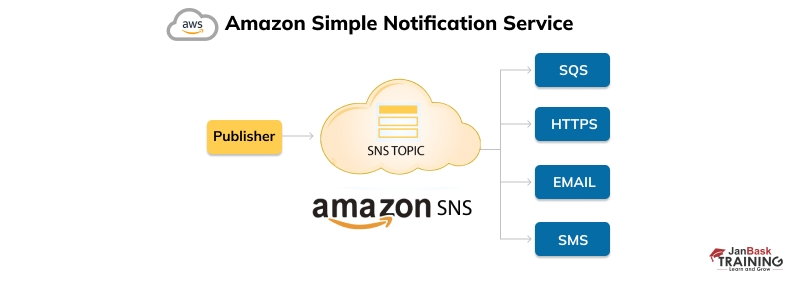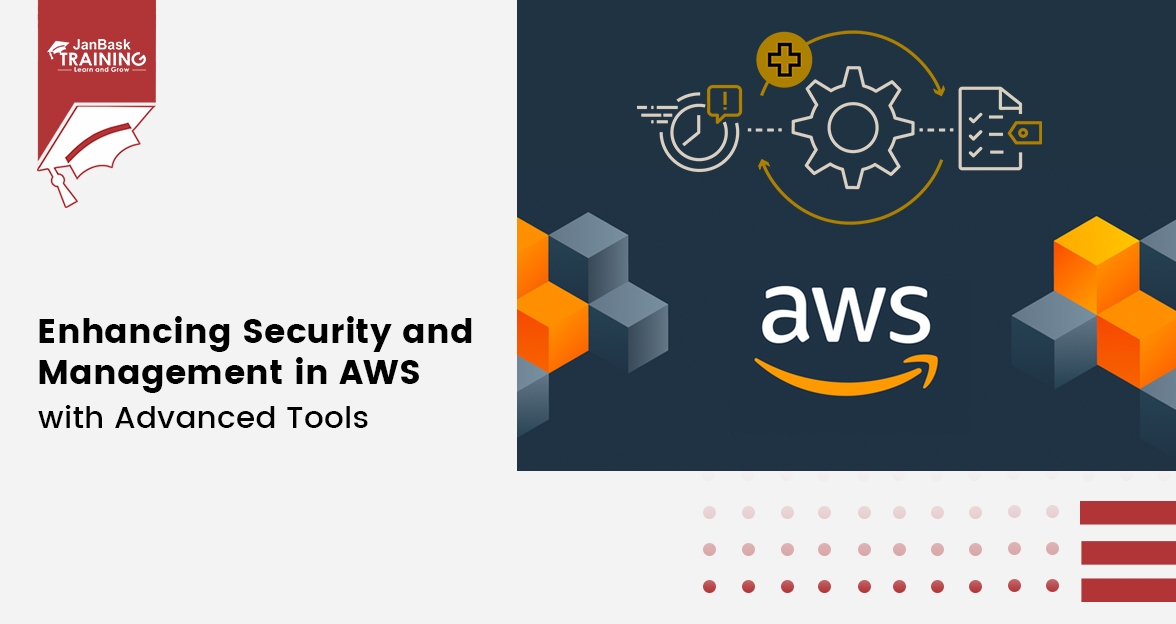Grab Deal : Flat 30% off on live classes + 2 free self-paced courses - SCHEDULE CALL
In today's fast-paced digital world, communication plays a vital role in every aspect of our lives. With the advent of Artificial Intelligence in AWS (A.I.), aws messaging has become more efficient and personalized than ever before. Amazon Web Services (AWS) offers a range of powerful A.I. services and aws messaging solutions that are transforming how we communicate and interact with technology. In this blog post, we will explore the capabilities of AWS artificial intelligence services, delve into their messaging offerings such as Amazon Email Services and AWS Notification, and conclude by highlighting the immense potential they hold for revolutionizing communication.
Get your AI career started with an Artificial Intelligence training program and gain practical learnings around Deep Learning and Machine Learning, and the clean-coded & effective programming languages.
Artificial Intelligence in AWS is no longer just a buzzword; it has become an integral part of many industries, including communication. AWS provides a comprehensive suite of Amazon AI services that can be leveraged to enhance aws messaging experiences. From natural language processing to sentiment analysis, these services enable businesses to understand customer preferences better while delivering highly personalized messages.
One notable service offered by AWS is Amazon Comprehend, which uses machine learning algorithms to extract key insights from text data like emails or social media posts. By analyzing large volumes of unstructured data quickly and accurately, businesses can gain valuable insights into customer sentiments or trends.Amazon Comprehend can be particularly useful for businesses in the customer service industry. For example, a company that receives a large number of customer emails or social media posts can use Amazon Comprehend to automatically categorize and prioritize these messages based on their sentiment. This allows customer service representatives to focus on addressing the most urgent or negative feedback first, improving response times and overall customer satisfaction.
In addition to sentiment analysis, AWS AI services also offer natural language understanding capabilities through services like Amazon Lex and Amazon Polly. These services enable businesses to build conversational interfaces for applications, chatbots, and voice-enabled devices.For instance, a retail company could leverage Amazon Lex to create a chatbot that assists customers in finding products or answering frequently asked questions. The bot can understand natural language queries from customers and provide relevant responses in real-time. By automating these interactions with AI-powered chatbots, businesses can improve efficiency and deliver better experiences for their customers.
Another notable AWS AI service is Amazon Rekognition, which provides powerful image recognition capabilities. This technology enables businesses to analyze images at scale and extract valuable information from them. For example, an e-commerce platform could use Amazon Rekognition to automatically tag product images with relevant keywords or identify objects within images.Furthermore, AWS offers tools like SageMaker that allow developers and data scientists to build custom machine learning models without requiring extensive expertise in machine learning algorithms or infrastructure management. With SageMaker's easy-to-use interface and pre-built algorithms, businesses can accelerate the development process of AI solutions tailored specifically to their needs.
Messaging is at the heart of modern-day communication strategies across various platforms – email being one prominent channel for both personal and business interactions. Within the realm of AWS lies Amazon Simple Email Service (SES), providing developers with scalable email infrastructure without worrying about managing servers or maintaining deliverability rates.Amazon SES allows users to send transactional emails such as order confirmations or password resets reliably through its robust API integration options while ensuring high deliverability rates using built-in mechanisms like DKIM signing or SPF records.
In addition to transactional emails, Amazon SES also supports bulk email sending for marketing campaigns or newsletters. This is particularly useful for businesses that need to reach a large number of customers or subscribers with important updates or promotional content. With the ability to send millions of emails per day, Amazon SES provides the scalability required for such high-volume aws messaging.One key advantage of using Amazon SES is its integration with other AWS services. For example, users can easily set up triggers in AWS Lambda to automatically send emails based on certain events or actions within their application or system. This allows for real-time communication with customers and ensures timely delivery of important notifications.
Furthermore, Amazon SES offers features like bounce and complaint handling, which help maintain sender reputation and improve overall deliverability rates. When an email bounces (i.e., fails to be delivered), Amazon SES provides detailed feedback about the reason for the bounce, allowing users to take necessary actions such as updating recipient information or removing invalid email addresses from their mailing list.To further enhance deliverability rates and protect against spam complaints, Amazon SES includes built-in mechanisms like DKIM signing and SPF records. These authentication methods verify that emails sent through Amazon SES are legitimate and not forged by malicious entities. By implementing these measures, businesses can establish trust with receiving mail servers and increase the chances of their messages reaching recipients' inboxes instead of being marked as spam.
Amazon SES also integrates seamlessly with other AWS services such as AWS Identity and Access Management (IAM) for managing user permissions and access control policies. This ensures that only authorized individuals have the ability to send emails through the service, adding an extra layer of security.Finally, it's worth noting that while Amazon SES provides a reliable infrastructure for sending emails at scale, it does not provide features commonly associated with traditional email clients such as inbox management or reading received messages. It primarily focuses on outbound email delivery rather than serving as a full-fledged email client interface.
Overall, leveraging messaging solutions like Amazon SES in AWS offers businesses a cost-effective and scalable way to handle their email communication needs. From transactional emails to bulk marketing campaigns, the service provides robust API integration options, high deliverability rates, and built-in mechanisms for maintaining sender reputation. With its seamless integration with other AWS services and features like bounce handling and authentication methods, Amazon SES enables businesses to streamline their aws messaging processes while ensuring reliable delivery of important information to their customers or subscribers.

In today's fast-paced world, timely notifications are crucial for effective communication. AWS Notification Services offers a range of options to ensure that important information reaches the intended recipients promptly.Amazon Simple Notification Service (SNS) is a fully managed aws messaging service that enables developers to send real-time messages and push notifications to mobile devices, email addresses, or even other distributed services. With SNS, businesses can effortlessly deliver critical updates or alerts to their users across multiple platforms simultaneously.One of the key features of Amazon Simple Notification Service (SNS) is its ability to send real-time messages and push notifications to mobile devices. This capability is especially valuable in today's mobile-centric world, where people rely heavily on their smartphones for communication and information.
With SNS, developers can easily integrate push notification functionality into their applications, ensuring that users receive timely updates and alerts. For example, a news app could use SNS to send breaking news notifications directly to users' phones as soon as an important story emerges. Similarly, an e-commerce app could leverage SNS to notify customers about flash sales or special offers in real-time.SNS also supports sending notifications via email addresses. This can be useful for various scenarios such as sending order confirmation emails or notifying subscribers about updates and changes in service offerings. For instance, a travel booking website could utilize SNS to automatically send booking confirmations and itinerary details via email whenever a customer makes a reservation.
In addition to mobile devices and email addresses, SNS provides integrations with other distributed services. This means that businesses can extend the reach of their notifications beyond traditional channels. For example, by integrating with AWS Lambda functions or HTTP endpoints, developers can trigger specific actions based on incoming messages from SNS.
Furthermore, SNS allows for flexible message delivery options such as direct publish-subscribe aws messaging or fanout messaging through topics. With direct publish-subscribe messaging, developers can target specific recipients or groups by subscribing them directly to the desired topic(s). On the other hand, fanout messaging enables broadcasting messages across multiple subscribers without requiring individual subscriptions.To ensure high availability and reliability of message delivery, AWS Notification Services leverages cloud infrastructure provided by Amazon Web Services (AWS). This means that businesses don't have to worry about setting up their own infrastructure for managing notifications; instead they can rely on AWS's robust network architecture which ensures scalability and fault tolerance.
Overall, AWS Notification Services, specifically Amazon Simple Notification Service (SNS), offers a comprehensive solution for organizations looking to effectively communicate with their users. By providing various delivery options and integrations, SNS enables businesses to reach their target audience promptly and efficiently across multiple platforms and devices. If this field interests you and you want to pursue a career in cloud engineering, know more about it and take the necessary steps.
While AWS AI services and messaging capabilities offer numerous benefits, it is essential to consider the pros and cons before integrating them into your applications.
Pros:
Cons:
As technology continues to evolve rapidly, so does our need for efficient and personalized communication solutions. AWS artificial intelligence services combined with powerful messaging offerings like Amazon Email Services and AWS Notifications provide businesses with the tools they need to revolutionize how they communicate with their customers.With seamless notification services through SNS, businesses can ensure that important information reaches users promptly across various platforms. The power of A.I. and messaging in AWS opens up endless possibilities for enhancing communication experiences in both personal and professional realms.Embracing A.I.-powered messaging solutions within the realm of AWS allows organizations to stay ahead in this digital age by providing more engaging interactions while streamlining their communication processes. As technology advances further, we can expect even more exciting developments in this space – making communication smarter than ever before! Enrolling for a AWS Solution Architect Training course gets you a well-rounded knowledge of Amazon Web Services. Get practically ready-to-apply knowledge around architectural principles & services of AWS, design & deploy scalable, robust apps over AWS, AWS testing & security, and much more.
AWS Training For Administrators & Developers


A Comprehensive Guide to Aws Global Infrastructure

Enhancing Security and Management in AWS with Advanced Tools


Cyber Security

QA

Salesforce

Business Analyst

MS SQL Server

Data Science

DevOps

Hadoop

Python

Artificial Intelligence

Machine Learning

Tableau
Download Syllabus
Get Complete Course Syllabus
Enroll For Demo Class
It will take less than a minute
Tutorials
Interviews
You must be logged in to post a comment